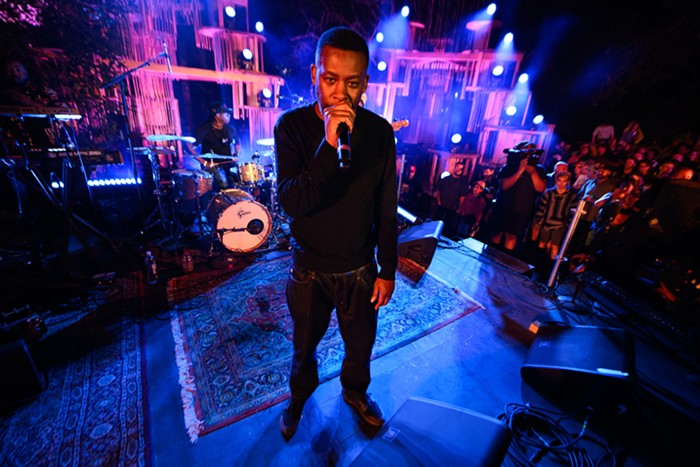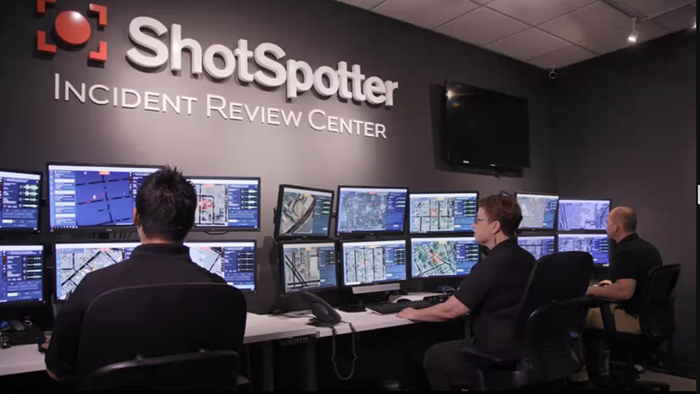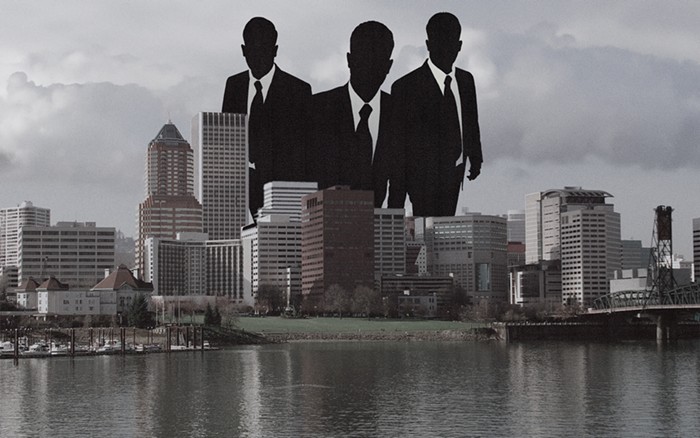Walk Ways
PICA
Sept 4-Nov 2
After the stunningly lame All the Way with Jim & Shel, PICA rebounds beautifully with Walk Ways, a travelling group exhibition curated by PICA's own Stuart Horodner. Walk Ways, which even sports a nifty catalogue, focuses on artists who create their art by strolling, pacing, ambling, sauntering, limping, staggering, promenading and lurching. What sounds like a narrow focus for a large exhibition turns out to be full of incredibly diverse work. The pedestrian influences on this show range from Ralph Waldo Emerson to Monty Python, while the artworks included are executed in video, postcards, LED monitors, and Styrofoam, as well as the standard drawing, sculpture, and photography. The artists hit the pavement for reasons that run from overtly political to intensely private. Many chose the public streets and sidewalks as an arena to create mini-social performances, like the hulking Martin Kersels, who would fall on his face just to make bystanders squirm. Francis Aÿls gave art students everywhere a shot of inspiration by taking a different drug every day for a week then walking it off. Mowry Baden crafted a walking stick designed to leave behind a wolf's paw-print, which could stir up all kinds of fun, and Tom Marioni made a surprisingly delicate drawing by attaching pencils to his hips then repeatedly passing by a piece of paper in his studio. This is one of the best group shows I have seen in a long time, so forgive me when I advise you to walk, don't run, to check this show out. CHAS BOWIE
Michael Brieger
Mark Woolley Gallery
From faraway, the black, white, and gray-toned paintings of Colorado artist Michael Brieger take on the vivid precision of photographs. However, Brieger's intricate method of shading makes for incredibly elusive images up close, amplifying the mystery and creepiness of his subject matter. In "America Waltzing," for instance, a moose (or rat?) dressed in a ball-gown dances with a man whose face is obscured by darkness, as a stately walrus, perhaps, appears to applaud or rise up in outrage. It's unclear what, exactly, is happening in most of his animal-dominated paintings. But there's so much action in all of them, it gives the feeling of watching an old film from the 1920s--with so much flickering light, the motion is esoteric and subsequently dangerous. In Brieger's take on Edward Hicks' "The Peaceable Kingdom," the animals take on a decidedly sinister quality, with the bull looming as if it has just been skinned, the cherubs replaced by a siren or temptress. It's all very demented, cryptic, and plays into the primal fear of the dark, sharing a vague aesthetic kinship to illustrator Sir John Tenniel. He also exhibits some mixed media, wood cutouts, influenced by Native American art, but swept into the modern era of telephones and sunglasses. On all fronts, the gravity of Brieger's talent is disarming. JULIANNE SHEPHERD
The Organ: Review of Arts, Vol. 1, Issue 1
First issues of papers/magazines/zines are notoriously crappy, so that The Organ looks great and reads well is even more of an accomplishment. Started by local arts writer/artist Camela Raymond, The Organ is a "bimonthly broadsheet by and for artists...that seeks to increase, diversify, and intensify the dialogue about the arts in your community." This issue includes a fan letter to Richard Yates, an interview with Seaplane's Holly Stalder on fashion as visual art, an essay by Harrell Fletcher about learning from others by being open to their lives, several well-put art reviews, and interesting classifieds. The Organ is definitely a post-McSweeney's publication (it has that "curio" feel about it, in layout and in mission statement), but doesn't cop anybody's style, and it's smart but not alienating. And it's free around town, so keep an eye out for it (I found mine in a gallery). SHEP
The Look of Music--The Sound of Art
Fri Sept 13, 7 pm
Portland Art Museum, For more info call 503-226-2811
If ever there were two organizations with their fingers on the pulse of what's happening, they would be the Portland Art Museum and the Oregon Symphony. Whoo! Now the two powerhouses are teaming up to illuminate The Look of Music--The Sound of Art. While one guy plays solo cello, these other four heartbreakingly earnest artistes will emote all over their canvases as we watch, er, rock on.
This harkens back to when the J. Geils Band invited Lester Bangs onstage to review their show on the spot, after listening to him bellyache about the low visibility of his chosen profession. As Dave Hickey pointed out, most critics are professional air guitarists, but now Bangs, and these artists, have the chance to do their thing in front of the adoring public. Bangs milked his opportunity for all he was worth--he wore his coolest threads, typed with reckless abandon, even pulled a Pete Townshend on his Hammermill. Unfortunately, his groundbreaking live review was nothing but wingdings that looked suspiciously like Sarge cussing out poor Beetle. Here's hoping these local painters have a better go at it, but word on the streets is that they are just doing it for some of that legendary symphony groupie action. CB












